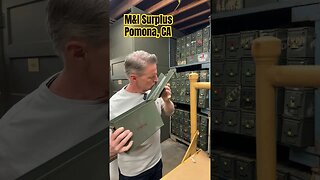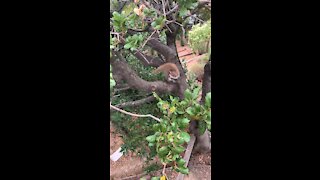SUPER RARE! GEC 73 Scout knife.
Ebay: https://www.ebay.com/sch/jeep*cats/m.html?_nkw=&_armrs=1&_ipg=&_from=
+ GEC tour by ME! in 2010 https://www.youtube.com/watch?v=VsbX-s5De2U&feature=youtu.be
Facebook ► https://www.facebook.com/Doggorunning
Dog's Knives ► ndi01108@yahoo.com for questions, appraisals, sales, TV appearances
Bolster
A smooth, rounded piece of metal, usually nickel silver, located on the end of a knife handle for added strength, protection of the cover, and improved appearance. An “extension bolster” is wider than the handle cover and extends up the side of the blade tang and over the back square to make a flush joint.
A small recess at the shoulder of a knife blade where the cutting edge begins. This recess provides clearance, or run out, when sharpening. A blade with out a choil always has a blunt section on the transition from the sharp edge to the thick tang. A choil is one of the old badges of quality
Cover
The slab of material that forms the side of a knife handle. “Covering” refers to the manufacturing operation of fastening the cover to the handle scale.
Crocus
A very fine polishing powder that produces a mirror finish of high quality.
Double Header
A machine that simultaneously glazes both sides of a knife blade using wheels with a glued head of very fine emery abrasive. This machine can apply more pressure that a hand finisher, and of course, do both sides at once.
File Side
The opposite side of a knife, knife blade, or knife handle from the “mark side”. Also called pile side. See mark side.
Front
A finish produced by a wheel with a glued head of a very fine emery abrasive. Wheels like this are often called set-up wheels because the head is built up with several different applications of glue and emery glaze finish is determined by the fineness of the thin grey lines left by the abrasive.
Horn
From the old English word meaning handle. Haft may refer to the handle part of a knife or to the act of fitting the handle to a knife blade. Hafting is shaping and polishing the handle of a fixed or folding blade knife.
Jack Knife
A simple rugged pocket knife with a single blade or both blades at only one end. Blades in a Jack Knife often have square tang end to hold them in half-open position.
Joint
The portion of a folding knife where the blade is connected to the handle with a pivot pin. Types of joints refer to how much of the tang remains exposed when the blade is closed. A knife with narrow side scales that expose the sharp corner of the blade tang has a “common” joint. A “half-sunk” joint has wider side scales, but still leaves some blade tang exposed. A “flush” or “full-sunk” joint is more comfortable to handle and causes less wear in a pocket.
A fingernail groove near the back of a pocket knife blade which provides a fingernail grip for opening the knife. A “common” nail mark is shaped like a half moon. A “French” nail mark is straight and
Scale
The lining or side of a pocket knife, usually made of brass. The scale usually has a cover attached on the outside, but on some knives the scale also functions as a cover. A “center” scale is assembled in the middle of each knife to separate the operating parts from each other. A center scale can be full scale or a cut-out scale that has the front part cut out. A “cut-out” scale may also be placed in the side of a knife to provide more working clearance for the blade.
Spring
A pocket knife spring exerts a continuous pressure which holds the blade open or closed. A spring with a blade on both ends is known as a “two-end” spring, whereas a “cap-end” spring controls one blade with one end and the other end becomes part of the handle. An “equal-end” spring is a symmetrical two end spring with identical halves.
Swedge
Refers to the pointed part of a blade. A “common” swedge begins gradually with a long taper, whereas a “cut” swedge begins with a small shoulder and then tapers on out to the blade point. A “single” swedge means one side only – the mark side, and a “double” swedge means both sides. A “long” swedge begins at, or close to, the blade shoulder. In the cutlery trade, this word is commonly spelled “swedge” but is listed in dictionaries as “swage.”
Tang
The portion of the blade to which the handle is fastened. A pocket knife tang is very short and cammed to produce the “walk and talk” action, whereas the fixed-blade tang may extend all the way through the handle. A full tang is the same width as the handle and usually extends all the way through the handle. A single tang fits inside the handle, which surrounds it entirely. A double tang is like a full tang, but with a slot down the middle which locks the other handle parts in place.
Walk and Talk
An old-time expression describing the action of a pocket knife blade. The tang end of the blade moving along the spring is the”walk”, and the snap of the knife at the end of the opening or closing cycle is the “talk.”
-
 1:00
1:00
Doggorunning
5 months agoI was Caught Doing the Smell Test
67 -
 5:17
5:17
amirehmo
3 years ago£3.4 Million Lamborghini Veneno Roadster SUPER RARE
9 -
 0:29
0:29
Brighteyedhoot
2 years agoSuper rare blonde raccoon and siblings sighting
441 -
 2:24:22
2:24:22
WeAreChange
4 hours agoCuban Missile Crisis 2?! Russia Sends Nuclear Sub Off The Coast Of U.S.!
43.7K21 -
 47:09
47:09
Candace Owens
5 hours agoUh-oh! I Got Fired. | Candace Show Ep 1
49.4K173 -
 1:56:42
1:56:42
The Quartering
7 hours agoRussia Warships In Cuba, Candace Owens, Hunter Biden Trial, AOC FREAKOUT, Disaster For Dylan Mulvaney & Porch Pirates Get Worse
60.4K17 -
 57:10
57:10
Kimberly Guilfoyle
10 hours agoBiden’s America Last Disaster and What We can do About it. Sen Tom Cotton, Candice Jackson & John Rourke | Ep. 133
57.7K73 -
 1:43:44
1:43:44
Redacted News
7 hours agoRussia's Nuclear Warships ARRIVE in Cuba, U.S. in STRIKING distance | Redacted w Clayton Morris
131K240 -
 14:55
14:55
SLS - Street League Skateboarding
4 days agoBest Trick Jam at SLS APEX 02 - Tyson Bowerbank, Yuto Horigome, Dashawn Jordan & more...
61K10 -
 8:11
8:11
Vigilant News Network
9 hours agoCOVID “Vaccines” Hit By New Bombshell | Beyond the Headlines
42K38